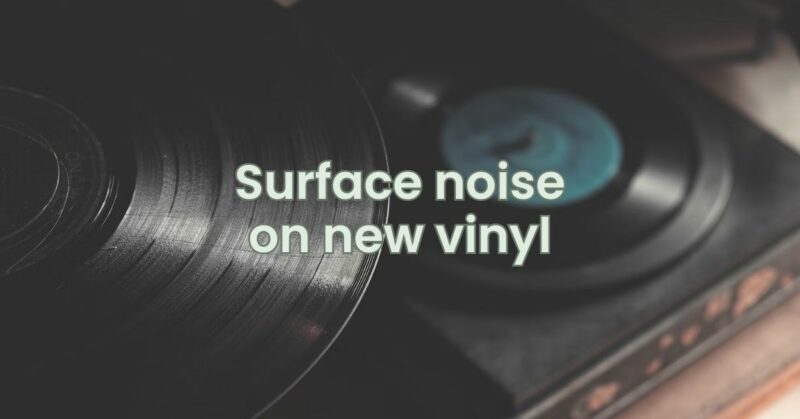Vinyl records have experienced a resurgence in popularity, attracting music enthusiasts with their warm and authentic sound. However, surface noise on new vinyl remains a common concern for many vinyl collectors. Surface noise refers to the background noise, including pops, clicks, crackles, and hisses, that can be heard during playback. In this article, we will explore the causes of surface noise on new vinyl, ways to prevent it, and practical tips to enhance your overall listening experience.
Causes of Surface Noise on New Vinyl
Several factors can contribute to surface noise on new vinyl records:
- Dust and Debris: During manufacturing, handling, and shipping, vinyl records can accumulate dust, debris, and microscopic particles. When the stylus moves over these contaminants, surface noise is generated.
- Static Electricity: Vinyl records are susceptible to static buildup, especially in low-humidity environments. Static charges can attract dust and debris to the record surface, causing surface noise during playback.
- Imperfect Pressing: Inadequate quality control during the pressing process can result in records with imperfections, including dimples, warps, or non-fill. These pressing defects can lead to surface noise.
- Groove Wear: Over time, the repeated play of a new vinyl record can cause groove wear, resulting in surface noise and diminished sound quality.
Prevention and Improvement Techniques
To minimize surface noise on new vinyl records and improve your listening experience, consider the following techniques:
- Proper Cleaning: Before playing a new vinyl record, clean it thoroughly using a carbon fiber brush or a record cleaning solution to remove dust and debris. Proper cleaning will reduce the potential for surface noise caused by contaminants.
- Anti-Static Measures: Employ anti-static brushes or mats to reduce static buildup on the record surface, preventing dust attraction and minimizing surface noise.
- Vinyl Inner Sleeves: Replace the original paper inner sleeves with anti-static or poly-lined inner sleeves to protect the vinyl from dust and reduce static during storage.
- Controlled Environment: Maintain a stable humidity level in your listening environment to minimize static electricity and reduce dust attraction on the record.
- Quality Pressings: Choose vinyl releases from reputable pressing plants known for their attention to quality control. Higher-quality pressings are less likely to exhibit pressing defects that lead to surface noise.
- Store Records Vertically: Store your vinyl records vertically, as this helps prevent warping and maintains the integrity of the record’s surface.
- Avoid Overplaying: Avoid excessive playback of the same vinyl record to prevent groove wear. Rotate your collection to distribute the wear more evenly.
- Upgrade Your Equipment: Consider investing in a high-quality turntable, cartridge, and stylus, as well as a good preamp and speakers. High-end equipment can improve tracking and reduce surface noise.
Conclusion
Surface noise on new vinyl records is a common concern for vinyl enthusiasts, but with proper preventive measures and attention to detail, you can enhance your listening experience and enjoy the rich, warm sound that vinyl records offer. By properly cleaning your records, using anti-static measures, storing records correctly, choosing high-quality pressings, and upgrading your equipment, you can minimize surface noise and immerse yourself in the pure and authentic sound of your cherished vinyl collection. Remember, caring for your records and equipment will not only reduce surface noise but also extend the life of your vinyl collection, allowing you to enjoy your favorite music for years to come.


